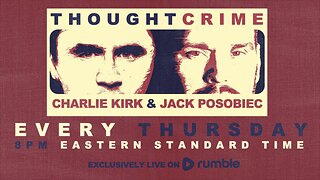Premium Only Content

An Origin Story 🤯 Easter Holiday Facts #shorts #shortsvideo #viral
The use of the Easter bunny as a symbol of Easter can be traced back to 16th-century Germany. The Easter bunny, also known as the Easter hare or Easter rabbit, was first mentioned in German writings in the 1500s, and by the 18th century, the tradition had spread throughout Europe.
In the United States, the tradition of the Easter bunny became popular in the 19th century, brought over by German immigrants. It was further popularized through Easter-themed books, cards, and advertisements in the 20th century, and today the Easter bunny is a widely recognized symbol of the holiday in many parts of the world.
Germany has several traditional Easter foods that are enjoyed during the holiday season. Some popular examples include:
Easter Lamb: Roast lamb is a traditional Easter food in Germany, especially in the southern regions. It is often served with potatoes and vegetables.
Easter Bread: Easter bread, or Osterbrot, is a sweet bread made with raisins, almonds, and spices like cinnamon and cardamom. It is often shaped like a braid or wreath and decorated with dyed eggs.
Easter Ham: Another popular Easter dish is ham, which is often glazed with honey or mustard and served with sauerkraut or potatoes.
Easter Soup: In some regions of Germany, it is customary to eat a soup made with green herbs, eggs, and cream on Easter Sunday.
Hot Cross Buns: Although originally a British tradition, hot cross buns are also popular in Germany during Easter. These sweet, spiced buns are made with raisins or currants and marked with a cross on the top.
Easter Eggs: While not a food in themselves, Easter eggs play a big role in German Easter traditions. They are often decorated and exchanged as gifts or hidden for children to find during Easter egg hunts.
#shortsvideo #easter #germany #shortvideo #trending #youtubeshorts #viral #tutorial
-
 LIVE
LIVE
Drew Hernandez
13 hours agoDOGE EXPOSES $2 BILLION SCHEME LINKED TO STACEY ABRAMS?!
2,719 watching -
 1:27:59
1:27:59
Kim Iversen
8 hours agoRFK Jr Declares No More Cheetos on Welfare? | Yale Confirms Long Covid Is Actually Vaccine Injury!
72K95 -
 1:08:43
1:08:43
The Charlie Kirk Show
5 hours agoTHOUGHTCRIME Ep. 74 — Charlie's Campus Return? Robo-Butlers? Garden of American Heroes?
67.8K16 -
 1:09:53
1:09:53
Slightly Offensive
6 hours ago $5.29 earnedIs the US Headed for MORE WAR Under TRUMP? | Guest: Scott Horton
36.8K9 -
 58:29
58:29
The StoneZONE with Roger Stone
5 hours agoRoger Stone Hails Confirmation of Kash Patel, Trashes Schiff for Attacks On Patel | The StoneZONE
43.8K13 -
 48:44
48:44
Man in America
10 hours agoA MASSIVE Global Financial Reset Is Coming—Are You Ready?
32.9K6 -
 1:15:42
1:15:42
Precision Rifle Network
1 day agoS4E5 Guns & Grub - The Best Rifle Under $2000
48.6K6 -
 1:02:54
1:02:54
Glenn Greenwald
1 day agoSouth Korean Economist Ha-Joon Chang on the Economic World Order, Trump's Tariffs, China & More | SYSTEM UPDATE #410
77.4K45 -
 1:02:27
1:02:27
Donald Trump Jr.
11 hours agoBye Mitch, plus Kash confirmed, Interview with AJ Rice | Triggered Ep.218
126K70 -
 1:12:27
1:12:27
The Amber May Show
12 hours ago $2.90 earnedWomen Of Rumble 02-20-25
33.2K7